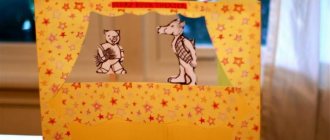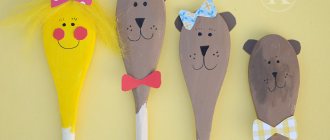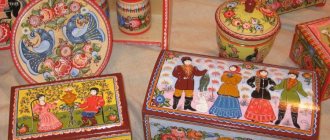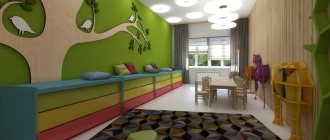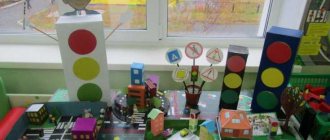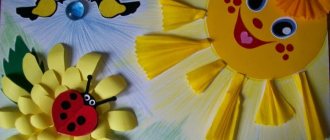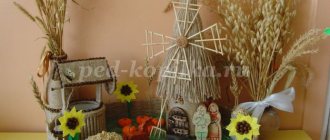To increase the effectiveness of speech correction classes for children, it is necessary to widely use speech therapy games. This especially applies to classes with preschool children, because their main activity is play. Through speech therapy games for preschoolers, speech sounds in syllables and words are automated, and the ability to coherently express their thoughts is developed.
Educational speech games for preschool children can be purchased in printed form. But many speech therapists use homemade games in their classes. Parents can also benefit from this experience.
Speech therapy games to reinforce correct pronunciation
In their classes, speech therapists use the following homemade games:
- “Release the balloons” to reinforce the correct pronunciation of the sound S. The painted balloons of different colors represent syllables with this sound. The child selects balls and pronounces forward and backward syllables. You can also stick images of objects with the sound C on the balls.
- "Autumn leaf fall." We hear the sound Ш when we sweep fallen leaves with a homemade miniature broom. On the paths drawn on cardboard there are yellow, red, brown leaves. The child imitates sweeping leaves by making a sound. Then we move on to sweeping paths with syllables and words starting with Sh.
- "Play, accordion." You can consolidate sounds in words using a homemade accordion with object pictures pasted onto any sound that was assigned to the child and which needs to be consolidated in the preschooler’s speech.
- "Magic Tree" The speech therapist draws a tree with leaves or fruits on which syllables are written or objects are depicted in the sound required for automation.
- “We are going to distant lands.” The locomotive is carrying carriages - we fix the sound Ch. Animals are riding in the carriages. By naming them, the child reinforces the correct pronunciation of the assigned sound and the composition of small sentences.
Do-it-yourself speech therapy manual for kindergarten. Master class with photos
Master class on making a speech therapy manual “The Magic Firefly”
Author: Fomina Dina Andreevna, speech therapist teacher, structural unit of the State Budgetary Educational Institution of Secondary Educational Institutions in the village of Maslennikovo. Goal: Differentiation of sounds in words, development of phonemic perception.
Children really like this manual and do not get bored of it at all. It will help not only differentiate sounds, but also develop the child’s skills of self-analysis and self-esteem, which is especially important when the Federal State Educational Standard is introduced into the education system. The idea is certainly not new, there are many manufacturing options, but I haven’t found such master classes. I will share with you my option. Equipment, material: • A piece of fiberglass, slightly larger than an A4 sheet.
• Wooden blocks for the frame. • Water with added ferric chloride. • Indicator screwdriver. • Laminator/tape. • Nail polish. • Nail polish remover. Step-by-step process for making a game
Step 1. To mark the locations for the holes in the manual, you can either prepare templates with pictures on sheets in advance, and then mark them on the PCB. Or make marks directly on the PCB, and then adjust the templates to them. So, we outline the heels that will need to be hit with wiring. We make them large in advance so that we can hit them accurately. We lead a path to each heel (the paths can be quite thin). There can be any number of such paths with branch patches. I have 2 of them. The main thing is that they do not intersect.
Step 2. Paint over these paths with varnish.
Step 3. Wait for the varnish to dry. Then we place the textolite in water and add ferric chloride in a ratio of 1:3. In this solution, the board is etched, and only the areas painted over with varnish remain - our tracks. Small boards are etched quickly, but such a large piece took half a day on each side, since the entire plate did not fit into the bucket. I also connected two wires from the power supply to the textolite board. This is just to speed up the process! You can do without this and just leave the board in the water overnight!
Step 4. Remove the varnish with a solvent.
This is what happens. Front and back view:
Step 5. Install the frames so that they can hold the templates with drawings. Instead, you can use adhesive photo corners or attach templates using rubber bands or clothespins or clips.
Step 6. We make templates with pictures for the task we need (finding a picture with a given sound, wild/domestic animals, words with a certain number of syllables, etc., etc.). Laminated for strength and durability. We cut holes in the templates in those places where there are heels on the PCB. Step 7. Cover the back of the book with beautiful paper for aesthetics.
Step 8. Insert templates into the manual.
For this tutorial I use an indicator screwdriver. It can be purchased at construction stores.
We place one finger on the symbol of the sound we are looking for. We place the second finger on the screwdriver. We look for a picture whose title contains this sound, and place the tip of a screwdriver in the hole under this picture. If the word actually has the target sound, the light will light up. You can make something similar to a screwdriver yourself. For example, use not your own body as a conductor, but a wire with two tips. On the wiring there is a light bulb or LED and a battery for it. The mechanism will light up when the circuit is closed. Everything will look aesthetically pleasing if the mechanism is placed in a pen or felt-tip pen. READY!
The manual is convenient due to its versatility. Templates can be very different. There are several spots on the textolite; you can use different contact points for each new template so that the child does not remember their constant position. The manual can also be used while studying the topic of electricity and electrical devices. I made it for work on differentiation and automation of sounds, but it will also be used for other purposes, for example, for differentiating general concepts (wild/domestic animals, etc.). For older children, you can explain the mechanism of operation and talk about electricity. For younger children, we organize a game story. For example, a game with a magic firefly. Instructions for the game plot: “There is a magic firefly in this wand. One night he dropped his pictures. Now the firefly can't find where his pictures are. Help him. Find only those pictures that have a sound in their title […]. To check if you are thinking correctly, place one finger on the sound symbol […] and the other on the stick with the firefly. Now place the stick in the hole next to the picture you chose. If this is a picture with a sound in the title […], then the firefly will be happy and light up. Check the rest of the pictures as well.” The master class may seem difficult for you, dear ladies, due to the use of unusual materials. But everything is much simpler than it seems. Try it and see. All necessary materials can be purchased at an electrical or radio store. Thank you for your attention!
We recommend watching:
Didactic game for preschoolers to develop fine motor skills Do-it-yourself didactic game for kindergarten Do-it-yourself houses made from plastic bottles Speech therapy manual “Who lives where?” DIY felt for kindergarten
Similar articles:
Do-it-yourself didactic games made from waste material
Do-it-yourself didactic game for preschoolers “In the world of animals”
Do-it-yourself didactic game for kindergarten on the topic “Sports”
Games for distinguishing sounds in words
Do-it-yourself speech therapy games for preschoolers help teach children to distinguish sounds by ear, develop their attention, and expand their vocabulary.
- "Funny transformations of words." The famous poem by A. Shibaev “The Letter Got Lost” is well suited for this game:
They say one fisherman
I caught a shoe in the river,
But then he
A crowbar caught the hook!
It is necessary to find the word that is lost and replace it with the appropriate one. Humorous drawings are also prepared for these quatrains.
- "Score a goal." Football goals are drawn on paper, the bars represent the letters M and L. In the images of footballs, the vowels I, Y, O, E, I, A. We score a goal and form the words: mil, soap, mole, chalk, crumpled, small. You can play the game by reading these words:
- If you use a barbell to make an M, if you use a barbell to make an L, and score an I into the goal, it will be... The child names the resulting word. So all the letter-balls fall into the goal.
- "Rebus". Solving puzzles develops a child's logic, thinking and speech. You can draw the puzzles yourself by encoding in them any word or tongue twister that uses the sound assigned to the child.
- "Replacement of sound." The speech therapist has a picture with a drawn object, he asks to replace the initial sound in the word. Barrel - daughter, point, hummock, night. You can replace sounds in other parts of the word. Goat - leather, bark, braid.
- "The Hidden Word" Show subject pictures. The child names what is shown. In every word there is another one that is hidden from us. The speech therapist asks: “Can you find the word that is hidden?” A duck is a dot, a scythe is a wasp, a shelf is a floor, a pillar is a table, a wolf is an ox.
- Lotto and Domino games can be made together with children. Select and paste subject pictures onto cardboard. The preschooler pronounces the names of the objects shown on the cards.
These do-it-yourself speech therapy games are used to develop the ability to generalize, analyze, and teach you to be attentive.
Homemade didactic game for automating sounds “Adventure Road”
Goal: consolidation and refinement of the skill of correct pronunciation of previously learned sounds.
Objectives: development of auditory and visual attention, perception; development of visual-motor coordination, orientation in space; vocabulary expansion
Materials: a large empty candy box, cut out pictures from old postcards and magazines, pictures with attached sound.
Homemade didactic game for automating sounds
Description of work with the manual:
The child is invited to go on a trip. Along the way, he will open magic doors and complete tasks. If everything is done correctly, then at the end of the journey he will receive a small surprise.
At the end of the trip the child receives a small prize
For example, to automate the sound “r” you can take a small machine. Drive along the road, imitating the sound of a rrrrrrrrrr engine, drive up to the door, open it and say the names of the pictures. Behind the last door the child finds a surprise - it could be candy, a picture, etc.
Theatrical play activity of children during classes with a speech therapist
Speech therapy classes for children are not complete without the use of elements of theatrical play activities for preschoolers. You can make figurines for the theater yourself. This could be a finger theater. Masks of fairy-tale characters are made from paper, they are put on the finger, and the performance is performed. In the tabletop theater, fairy-tale characters made of cardboard are inserted into spools of thread. The shadow theater is also interesting. It requires a small white backlit screen and black action figures.
You and your children can come up with your own unusual fairy tales, where the heroes can be vegetables, fruits, and household items. Small theatrical performances bring joy, develop children’s imagination, strengthen memory, and make speech varied and correct.
Speech therapy games for children play a major role in the development of correct pronunciation in preschoolers.
Visually - game aid “Speech therapy suitcase”
Visually, the game aid “Speech Therapy Suitcase” is a transformable set of aids that allows you to conduct classes in various areas. It is made of carpet in the form of a suitcase-album on split rings with filling in the form of a plastic mirror, photos depicting articulation exercises, pictures corresponding to the name of the articulation exercises, letters, numbers, conventional models of sounds, words, prepositions, fairy tale characters and other elements, made of felt on contact tape. Felt has universal properties that allow you to bring almost any idea to life. It is easy to work with, since it does not require special edge processing, pleases with the variety and brightness of the color palette and is pleasant to the touch. Options for games, tasks and exercises using the “Speech Therapy Suitcase” manual (approximate list, since you can come up with endless ideas).
- “Tongue, don’t be lazy, but work hard!”
- "Piano",
- "Palms"
- "Sound House"
- "Make a proposal"
- "Who? What? Signalman",
- "Syllable Engine"
- "Learning to read"
- "Collect the word"
- "Miracle Tree"
- "Whose tail?"
- “Create a non-existent animal”
- “Tell a story”, etc.


